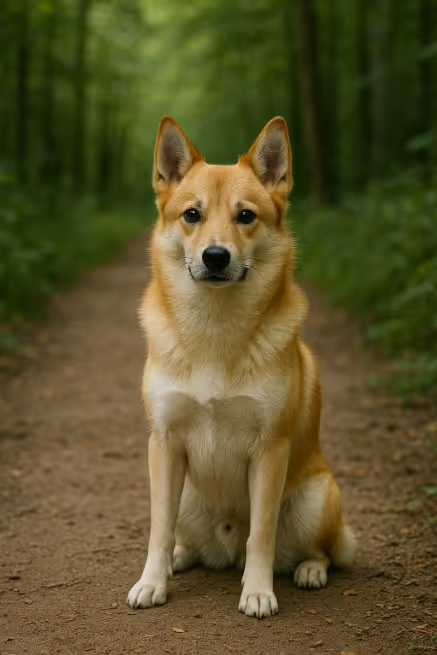The Norrbottenspets is a cheerful, foxlike Nordic spitz bred in Sweden’s far north to hunt small game and birds using an animated, “bark-pointing” style. Lively, affectionate, and highly aware, this compact athlete thrives with outdoorsy owners who enjoy hiking, training, and nose work. If you’re wondering “Are Norrbottenspets good apartment dogs?”—yes, for active homes that manage barking. “Do Norrbottenspets shed?”—they’re seasonal shedders with a weatherproof double coat.

Originating in Sweden’s Norrbotten and Finnish Lapland, the Norrbottenspets worked as a versatile hunting farm dog—flushing and “bark-pointing” capercaillie, grouse, and small game, and alerting to intruders around the homestead. The breed nearly vanished mid-20th century, then was revived by Scandinavian fanciers and is now recognized by FCI and Scandinavian kennel clubs. Still rare in North America (often in AKC FSS/UKC), the Norrbottenspets remains a hardy, people-oriented partner with a huge zest for life.
A small, square, quick-moving spitz with upright ears and a curled tail.
Low trimming, steady upkeep—expect seasonal coat blows.
A bright, high-energy hunter that needs daily outlets for body and brain.
Quick, eager, and vocal—keep sessions upbeat, varied, and scent-savvy.
Fuel the athlete but keep a lean silhouette for joint health.
A generally robust Nordic breed; routine screening still matters.
Rare in Canada—plan ahead and verify health/testing.
Are Norrbottenspets good apartment dogs?
Yes—if you provide 60–90 minutes of daily exercise, enrichment, and bark management.
Do Norrbottenspets shed?
Yes—moderate year-round and heavy seasonally. Brush frequently during coat blows.
Are Norrbottenspets hypoallergenic?
No. They are not hypoallergenic.
How much exercise does a Norrbottenspets need?
Plan for 60–90 minutes daily with off-leash sprints (in secure areas) and brain work.
Do they bark a lot?
They can—bark-pointing is part of the breed. Teach a reliable “quiet” cue and manage triggers.
Norrbottenspets vs Finnish Spitz—what’s different?
Norrbottenspets are smaller and typically white with red/yellow patches; Finnish Spitz are larger and solid golden-red.
Are they good with kids and other pets?
Affectionate family dogs with early socialization; supervise around small pets due to prey drive.
Can Norrbottenspets be off-leash?
Only in safe, enclosed areas or with a rock-solid recall; prey drive is strong.